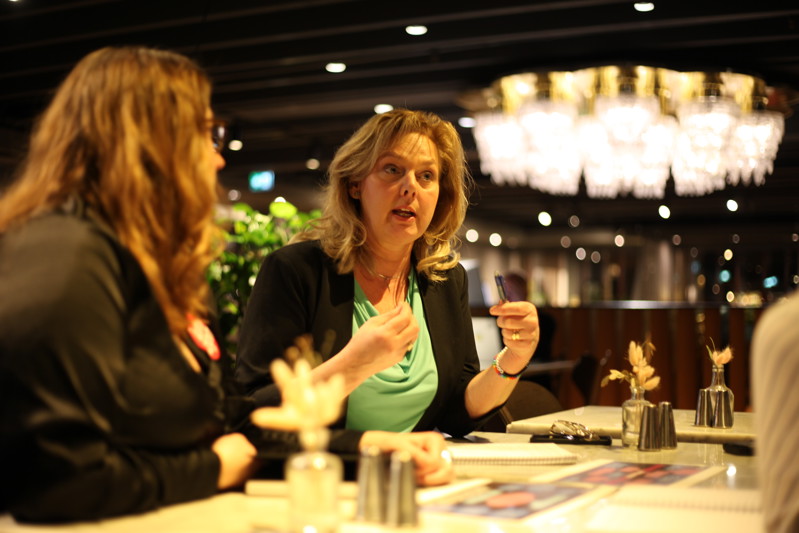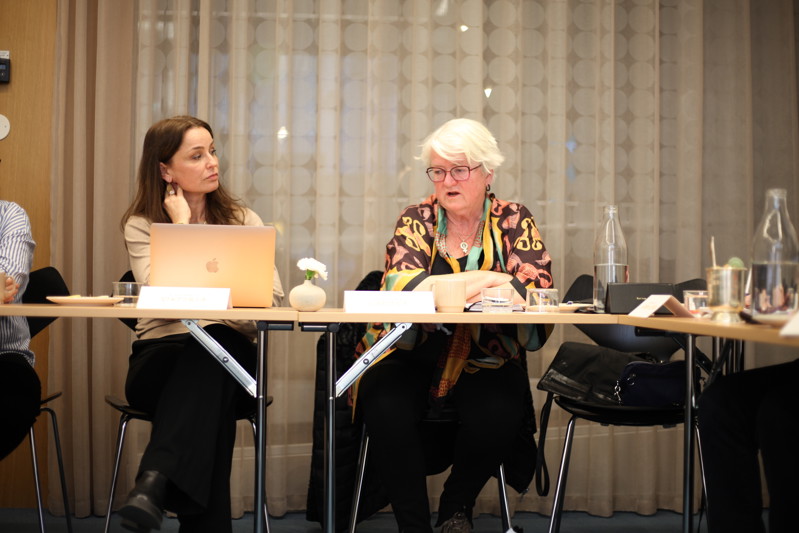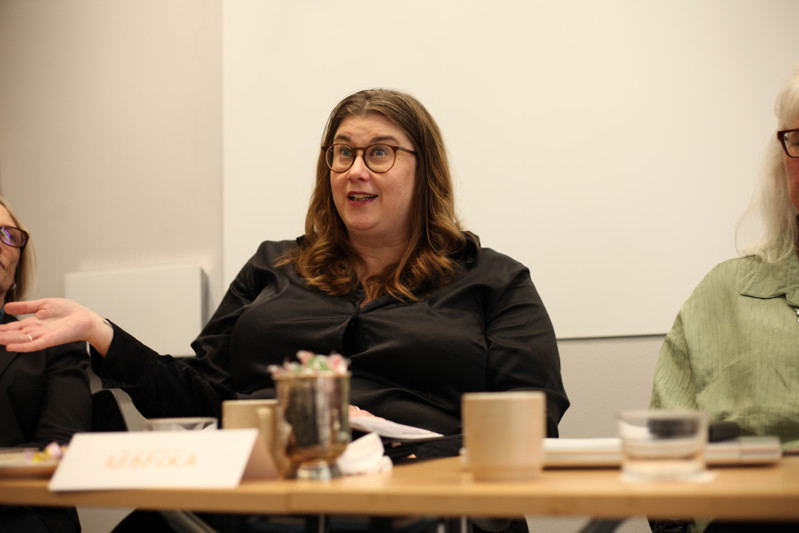Men’s active involvement is needed for gender equality on all fronts
In late March, eight women from a range of professional backgrounds gathered in Stockholm for a roundtable discussion on the importance of men’s involvement and responsibility in gender equality work. The participants, all previously interviewed for the knowledge overview Men’s Involvement and Responsibility, discussed how more boys and men can actively engage and take responsibility in preventing men’s violence against women.

The women came from various fields and professions, including policing, sociology, national coordination, and parliamentary work. Their experience ranged from academic research to on-the-ground efforts with gangs in Los Angeles and youth-focused violence prevention. All participants shared a common goal: to prevent and combat men’s violence against women and to create sustainable structures for gender equality. They brought with them deep knowledge and long-standing experience in gender equality work.
In October 2024, a group of men who had also been interviewed for the same knowledge overview gathered to discuss their own experiences and active involvement in the field of gender equality.
From knowledge to change
Much of the morning was spent in group discussions, centred on how to better engage men in gender equality efforts, how to ensure systematic competence within public authorities and workplaces, and how to effectively communicate the benefits of a more equal society.
Participants emphasised the importance of giving civil society a stronger voice and working closely with local core services such as the police and schools. A key conclusion was that talk is not enough—real impact comes through concrete action.
“I believe both the public and private sectors have much to learn from civil society. There’s also not enough cross-sector sharing of how gender equality is addressed,” said Monica Forsman, Senior Gender Equality Advisor at the County Administrative Board of Västerbotten.
“Gender equality is for everyone. Both women and men need to take responsibility and should have the same rights, obligations and opportunities. It’s difficult to push for equality when only half of us are doing the work.”

Engaging men without shifting the focus
The role of men in driving change was another central theme. It is crucial for men to step up and be visible in gender equality contexts—but they must also be aware of the greater likelihood that they will be listened to, and ensure their voices do not drown out others. Visibility must be balanced with accountability built on reflection, not dominance.
“Men often hold leadership positions and have the power to influence both people’s daily lives and the development of organisations. It’s not enough to think in financial terms—this is about creating conditions where everyone can thrive on equal terms.
Gender equality is a matter of knowledge, yet it’s not treated as such. Men must use their positions to elevate competent women, to stand beside them and show why they belong in those spaces. But that also requires concrete action—like reviewing salary structures, both in the private and public sectors,” said Rebecka Andersson, Secretary General of Unizon.
The group also highlighted the need for mandatory components in education programmes—especially for professions that regularly encounter violence, such as the police. A more structural approach was called for, including checklists and clearer employer responsibility for violence prevention work.
Clearer governance and communication
Communication emerged as a key issue. Participants stressed the importance of articulating the benefits of gender equality—not only for women, but for men as well. A gender-equal society leads to better health, stronger relationships, less violence, and closer bonds with children. There are also clear business advantages, as companies that work actively with gender equality often perform better financially.
“Men also benefit from gender equality. We know that poor mental health is a risk factor, and improving well-being benefits everyone in society. It’s also essential for men in leadership roles to understand that they act as cultural carriers. How you express yourself and behave sends strong signals about the culture within an organisation,” said Erika Gyllenswärd, Police Inspector and Development Lead for Domestic Violence at the Swedish Police Authority.
Participants also called for clearer political leadership and coordination. The resources and tools exist—they now need to be put to use. Some highlighted opportunities to influence higher education regulations, public sector governance, and official inquiries, and underlined the importance of gender-based power analysis that also considers socioeconomic background and ethnicity.
They argued that Sweden must do more to showcase the positive outcomes of a gender-equal society—not just the challenges. Doing so can help strengthen public support and build societal resilience.

The road ahead
Although the discussions painted a dark picture of the present—with women’s rights being questioned, increasing violence, and shifting norms around sexuality, relationships and masculinity—a strong sense of hope remained. Participants shared examples of successful methods, local initiatives, growing awareness, and new collaborations.
Moving forward requires that gender equality work be fully integrated into education, working life and public governance. Civil society and those with first-hand experience of inequality and violence must be given more space. And men must take responsibility—not primarily as experts, but as active collaborators in driving necessary change.
Read more
Explore our new summary of the knowledge overview Men's involvement and responsibility
Publication date: 18 June 2025
Last updated: 11 July 2025
